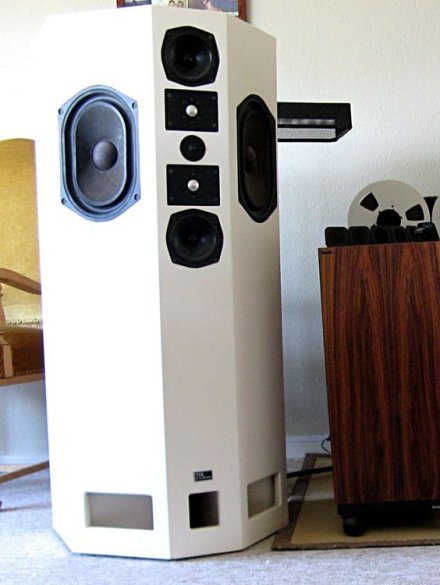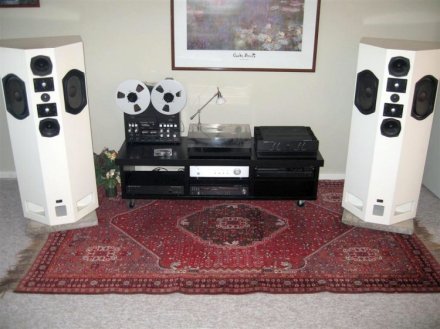The same thread I referenced in my post also contained pictures of a finished kit. Very minimalist. Very modern. I love the white finish. HIFISENTRALEN member 2-mas clearly did a beautiful job on them.
Design Features
Technical data gleaned from the 1989 Stereophile review
In the 1989 Stereophile review of the RSTL, there was some technical data I hadn’t run across before:
- The midrange line is not intended to increase output at all, but rather completely absorb the rear wave. Note the midrange line is completely stuffed, whereas the woofer lines are not
- The output of the midrange line is claimed to be 40dB down from the main output
- The midrange transmission line does lower the resonance frequency of the driver (to 40Hz), moving it away from the crossover point and hence (potentially) simplifying the crossover
- The crossover slopes are 3rd order. It is not clear to me if this is stated in the literature or observed in the measurements. It is also not clear if this is electrical, acoustic, or both
- The design mounts the two 6″ midrange units on a 5″ wide front baffle 😉
Point #1 is not surprising given the mids are crossed over at 200Hz in the RSTL, so there is no need for any bass augmentation from the mids.
Point #5 shows just how creative John Wright is!
Light shed on a mystery
Since undertaking this project, one of my big questions has been why the RSTL and RSTLM are designed to be angled such that they cross in front of the listening position. I finally found the answer in the 1989 Stereophile review of the RSTL:
When properly positioned, the front baffle, with its mid- and high-frequency drivers, is 45° off-axis from the listener. This scheme follows Blumlein’s recommendations for stereo reproduction. To increase dispersion, the supertweeter augments high-frequency output off-axis. Consequently, when measured on-0axis, the RS has has a rise in high-frequency response which the manufacturer says disappears at the listening position.
Interesting. I’d imagine this would be stunning when playing back a recording made with a Blumlein Pair, but it is not obvious to me that it would have technical advantages otherwise.




